#American independent horror film
Photo

#Night of the Living Dead#1968#60's#60s#b&w#independent horror film#American independent horror film#classic horror movies#zombie movies
1K notes
·
View notes
Text



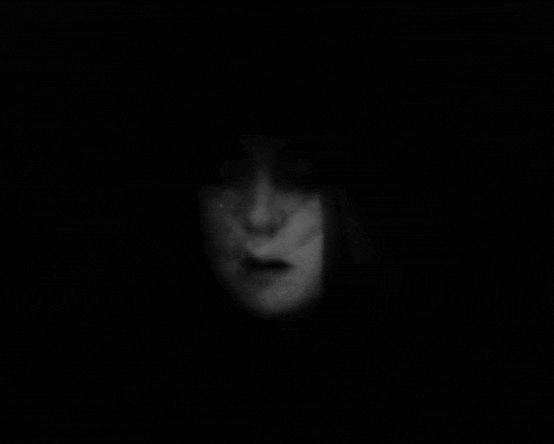

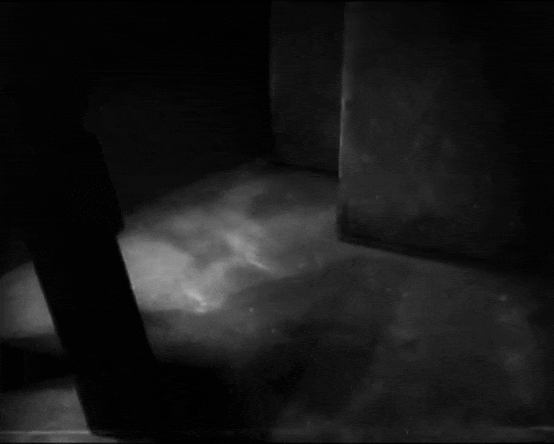



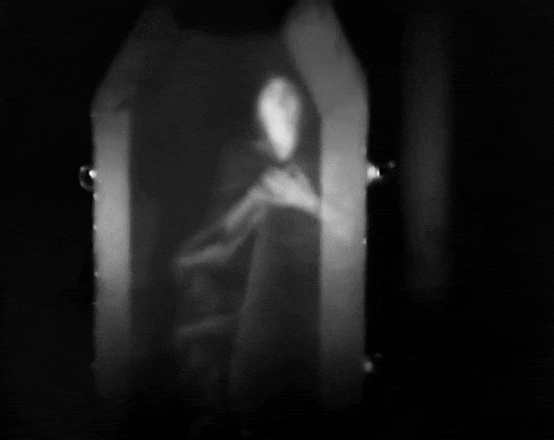

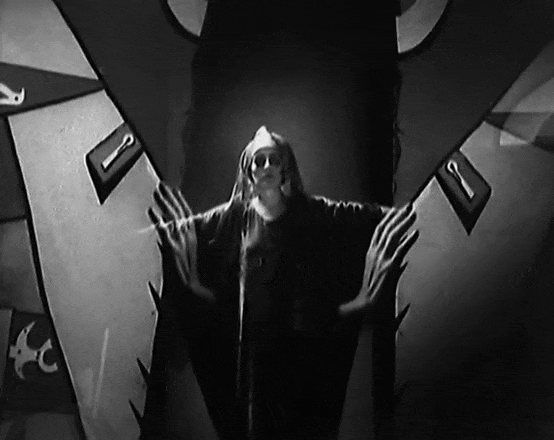
The Fall of the House of Usher (1928)
[letterboxd | imdb]
Directors & Cinematographers: James Sibley Watson & Melville Webber
Performers: Hildegard Watson & Herbert Stern
#1920s#1928#silent movies#silent film#silent era#silent cinema#filmblr#my gifs#my edits#movie gifs#film gifs#spooky vibes#american film#independent film#classic movies#classic film#horror film#horror#edgar allan poe
98 notes
·
View notes
Text
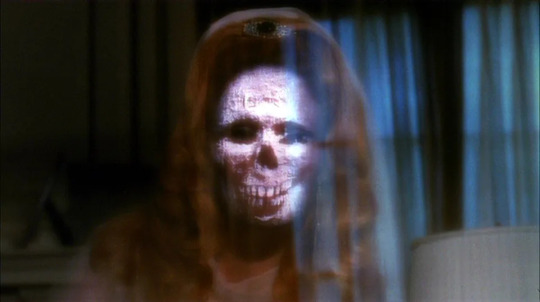
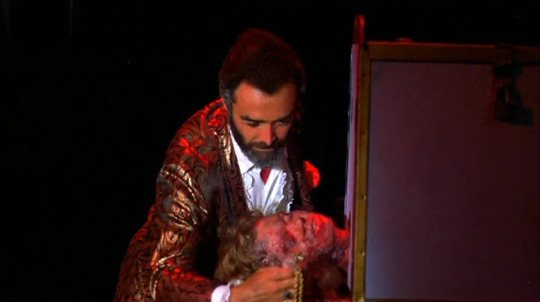

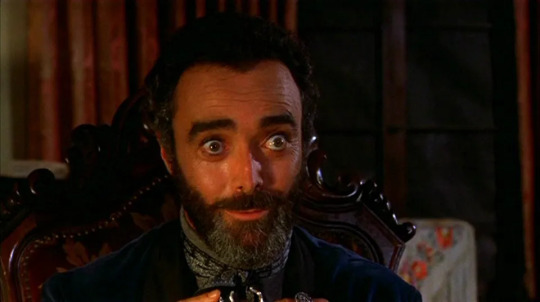




Doctor Death: Seeker of Souls (1973), Dir. Eddie Saeta.
#cult horror#grindhouse#horror movies#cult film#creepy#horror#doctor death#gore#doctor death seeker of souls#eddie saeta#70s horror#american horror#70s movies#american cinema#john considine#blood#horror comedy#1970s#1970s movies#1973#supernatural horror#leon askin#independent film#supernatural#film stills#obscure horror#cult cinema#psychotronic film
11 notes
·
View notes
Text
On March 31, 2000, Coven was screened at the Wisconsin Film Festival.

Here's some new Mark Borchardt art!
#coven#mark borchardt#american movie#horror film#black and white film#black and white art#horror#horror movies#indie film#indie horror#independent film#90s indie movies#horror short#short film#supernatural horror#religious horror#witchcraft#movie art#art#drawing#movie history#pop art#modern art#pop surrealism#cult movies#portrait#cult film
4 notes
·
View notes
Text
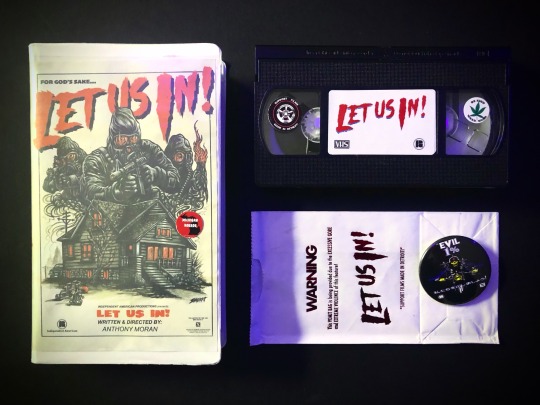
LET US IN! (2023) VHS
#LET US IN!#VHS#Independent American Pictures#gore#Detroit films#horror#Michigan horror#bikers#satans key#barf bag#evil 1%#2023
1 note
·
View note
Text


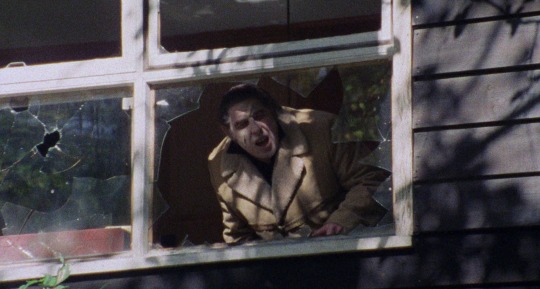


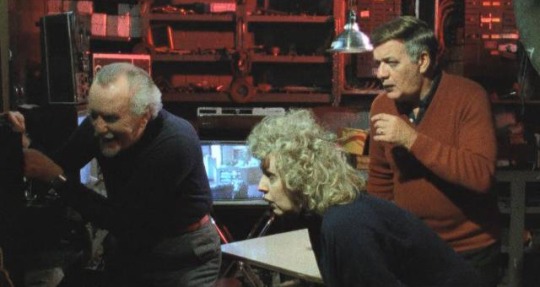
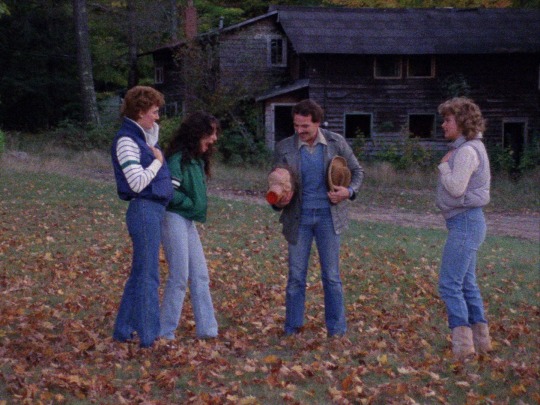
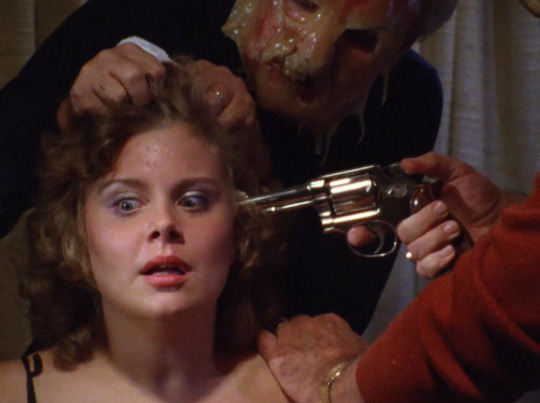
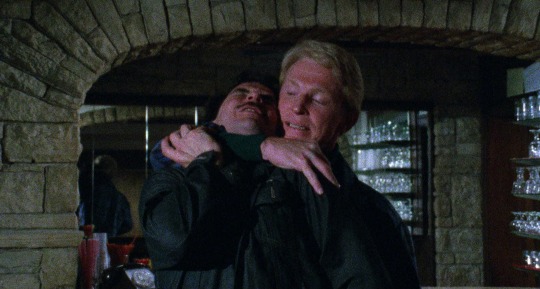

The Game (The Cold, 1984)
"The sign says no physical exertion! Is it safe?"
"Oh, come on, baby! Of course it's safe - I had a vasectomy."
"Well, in that case..."
#the game#the cold#1984#horror film#bill rebane#american cinema#independent cinema#william arthur#larry dreyfus#tom blair#jim iaquinta#carol perry#wally flaherty#don arthur#debbie martin#lori minnetti#randy hicks#ronnie hicks#pamela rohleder#aaron harper#j. d. beckman#alan g. rainer#bottom of the barrel zero budget indie nonsense from deepest darkest Wisconsin. Rebane had been making horror films for more than 20 years#at this point but you'd be forgiven for thinking the man had never been behind a camera in his life; a kind of budget reimagining of The#Most Dangerous Game‚ where three elderly billionaires pay some young idiots to hang out at their mansion (very clearly an off season hotel)#so they can spook them a little bit. murder and mayhem follows but it's mostly confined to the temperature dropping every so often (thus#that alternate video title). absolute garbage script and sub professional acting‚ this is still surprisingly fun if only in a 'is this a#real film that cost real money?' kind of way. ends with a series of poorly thought out twists which make less and less sense until a final#shot which feels more like a middle finger to the audience than anything else. pure trash but of interest to those fools (like myself) who#get their kicks from obscure indie horror. oh also the soundtrack is almost entirely honky tonk piano. because of course it is
15 notes
·
View notes
Text
Una chica muy particular estudiante de medicina con conocimientos en cirugía, en una fiesta es drogada y abusada por compañeros de trabajo y decide tomar venganza de una manera particularmente morbosa y exótica, a la vez descubre su verdadera pasión.
#independent cinema#cine indie#reseñas#movies b#horror films#American Mary#katherine isabelle#soska sisters#sexy gore
2 notes
·
View notes
Text
Monster Art History: The Wendigo
You may be wondering why the wendigo, which has become very popular in pop culture over the last 10 years or so, is usually depicted in Western sources with a deer head. This appears nowhere in Native American traditions, despite the creature having lots of folkloric variations. The association of the wendigo with deer is 100% Western, 100% modern, and has a long, weird history.
Just in case you need a primer, the windigo or witiko is a supernatural being from the Algonquin speaking nations of the eastern American continent. It appears as an emaciated figure, sometimes giant, sometimes covered in ice, sometimes both. In many stories, they have a literal heart of ice. Windigos are manifestations of cannibalism and winter, and hunt, kill and eat people. Someone who resorts to cannibalism to survive, or otherwise abandons their community for personal gain, will become one of them. A few stories tell of someone being “cured” and turned back into a human, but usually the only cure is to kill the monster. In the last several decades, native writers have associated windigos with capitalism and deforestation as an extension of their selfishness. If you would like to know more about the properly Native windigo in context, I recommend Dangerous Spirits: The Windigo in Myth and History by Shawn Smallman.
The creature first came into horror fiction with Algernon Blackwood’s “The Wendigo”. Note the spelling, which would become the standard in horror, and generally in non-academic Western sources. In that story, it is not associated with cannibalism, but instead is a more generic “evil spirit of nature”. This wendigo stalks white people in the wilderness and turns a Native character into a new wendigo by seizing them and flying with them into the sky. This definitely better fits fears about non white people, fears about nature, and how the one is closer to the other than “civilized” people. Its description in the story is vague (the most we get is that it has burned its feet away by running into the sky). But when the story appeared in Weird Tales in the 1930s, Virgil Finlay illustrated it like this, the first antlered wendigo I know of.

This story was ripped off by August Derleth, a prominent Weird author in the 1940s and the main popularizer of HP Lovecraft. In his Cthulhu Mythos stories, he introduces Ithaqua the Wind Walker, which is an alien version of Blackwood’s monster. This fits into Derleth’s vision of the gods and monsters of HP Lovecraft falling into the four classical elements, with Ithaqua being invented to represent Air. Ithaqua is usually depicted as an icy, emaciated giant, so ironically is one of the more accurate wendigos to Indigeonous beliefs in pop culture.
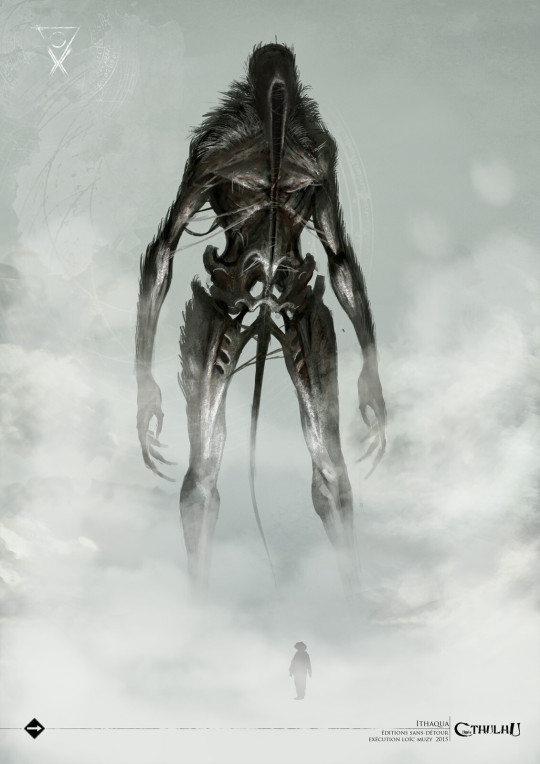
Image from a recent French edition of Call of Cthulhu RPG, by Loic Muzy
In Pet Sematary, Stephen King uses a wendigo as the reason for why the titular cemetery is cursed. This is an update of the classic racist trope of the “Indian Burial Ground”, except this time what gets buried there comes back animalistic and evil. The racist implications of that are pretty apparent. This wendigo is seen briefly and has ram’s horns. It does not appear in the first film adaptation, but does in the more recent one... with deer horns instead, because those are trendy right now.
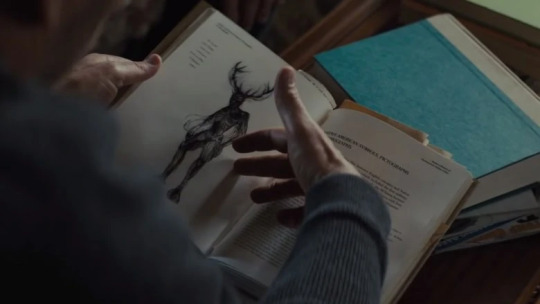
A good scholarly look at the real windigo versus the 20th century horror wendigo is “The Appropriation of the Windigo Spirit in Horror Literature” by Kallie Hunchman.
In the 1980s, a movie called Frostbiter: Wrath of the Wendigo was produced, but it wasn’t released until 1995 by Troma. From what I’ve read, it’s a pretty transparent ripoff of Evil Dead 2, with the characters being picked off in a haunted cabin with a zombie in the basement. The “twist” is that the origin of the horrors is a wendigo released by breaking a Christian demonology-style sacred circle. This wendigo is realized in stop motion animation, and has the most deer-like body yet.

A number of other independent horror movies in the 90s and 2000s used wendigos as a plot element. These follow the Blackwood/King approach of having the wendigo being something evil, ancient and Native American, reflecting white anxieties about living on stolen land more than Native anxieties about cannibalism and greed. Wendigo (2001) has the creature sicced on a white family when they hit a deer with their car. The Last Winter (2006) posits that global warming and fossil fuel extraction have unleashed the ghosts of dead animals, which are wendigo apparently, to revenge themselves on mankind. Which approaches the idea that greed is wendigo sickness, but I don’t think intentionally as a reference to modern Native literature. The “wendigo” in this movie are spectral moose and caribou.

The mainstream breakthrough of the deer-headed wendigo was in, appropriately enough for this blog, Pathfinder RPG. In “Spires of Xin-Shalast”, the last volume of Rise of the Runelords published in 2008, a wendigo is a major encounter. I suspect that either the author (Greg A. Vaughn), or one of the editorial staff had seen Frostbiter, as the setup involves a cabin haunted by dwarven cannibal ghosts who all killed and ate each other due to a wendigo’s influence. This wendigo is a hybrid of the Blackwood and Cree versions in terms of its MO: it is a cannibal ice spirit that wants to make more cannibals, and does so by abducting people and running off into the sky with them. Its design is the standard for what most Western artists depict wendigos as these days: an emaciated humanoid with the head and antlers of a deer (and the burned off feet of Algernon Blackwood, which are less common):
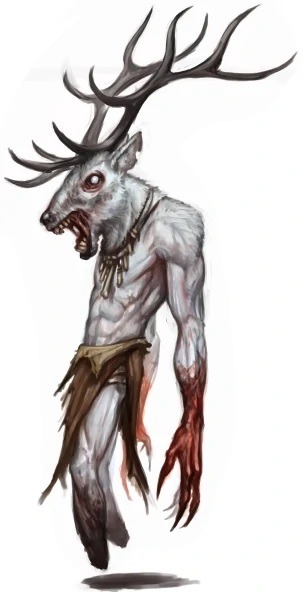
Image by Tyler Walpole, © Paizo Publishing
This wendigo definitely made a splash at the time; it was the first time I remember seeing a deer-headed wendigo, and art of that design started to become common. It pushed away previous wendigo depictions, which were typically werewolves (as French Canadian trappers had blended the concept with their own loup-garou, and Werewolf the Apocalypse had a whole faction of racist Native American “wendigos”) or shaggy and ape like (based more on the look of the Marvel Comics villain).
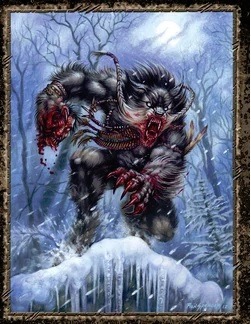
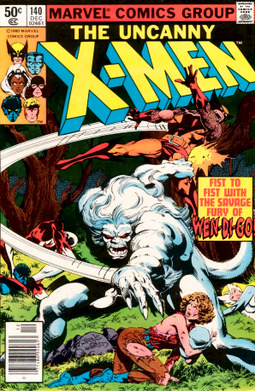
What turned wendigos from “folklore/horror monster” to “fandom blorbo” was Hannibal, which first aired in 2013. In that series, the first murder is a woman’s body impaled on a stag’s head, after which protagonist Will Graham has visions of a black stag, and a man with the antlers of a stag, representing murder, evil, and of course the cannibalistic murderer Hannibal Lecter.

Since Hannibal was super popular with the shipping fandom set, wendigo themed characters became popular in its wake, creating a wholly new way to culturally appropriate the wendigo. This was magnified by Over the Garden Wall, which came out in 2014, and its villain The Beast. The Beast is never called a wendigo, but is an antlered giant associated with winter, and so is commonly head-canoned as a wendigo and associated with them in fandom circles.

Which gets us to the modern day, where teenagers have misunderstood wendigo OCs, any character with antlers can be called a wendigo on the internet, and actual First Nations people with an actual cultural connection to the legend wish that people would just knock it off.
#and now you know#wendigo#windigo#witiko#creature design#art history#pathfinder rpg#algernon blackwood#august derleth#cthulhu mythos#stephen king#b movies#stop motion#hannibal#native american#first nations#cultural appropriation#long post
2K notes
·
View notes
Text
When Russia first invaded Ukraine in 2014, annexing the Crimean Peninsula and bringing turmoil and destruction to Ukraine’s eastern regions, many people—both outside Ukraine and inside it—found it easier to ignore the violence unfolding in the country’s east than admit that war had returned to Europe. This included creative artists, who rarely mentioned the war in their works, not least because they feared scaring off the Russian fans who constituted much of their audience.
As Ukrainians all over the country woke up to explosions on Feb. 24, 2022, the truth could no longer be ignored: The “big war” had truly begun. Today, the country’s art is catching up to the truth of war.
Before 2022, few Ukrainian artists and entertainers openly mentioned the ongoing war in their works. In fact, many pop stars like Ivan Dorn or Luna continued to perform in Russia and created works aimed, first and foremost, at the Russian market and in the Russian language. When criticized for this by their Ukrainian fans, many dodged the subject, claimed to be “apolitical,” or explained their actions as “trying to build a bridge” between Russia and Ukraine.
“My music isn’t about politics, it’s about healing souls,” Luna said in a lengthy interview with Russian opposition journalist Xenia Sobchak in 2021. “That’s why I don’t pay attention to the critics back home trying to make me feel guilty for giving concerts in Russia.” Similarly, Dorn claimed that by interacting with Russian listeners he was “trying to capture as many people as possible with my music so that they would never attack my own country.”
But the main reasons were pragmatic ones: The large and relatively rich Russian market has long been attractive to Ukrainian performers, much like the American market for the English-speaking world. Making films or music built around a Ukrainian context could scare off Russian fans, so the overwhelming majority of content made in the 2000s and 2010s was tailored to sound and look as neutral as possible, devoid of any references to local events or personalities. There were, of course, notable exceptions.
Musicians, such as singer and veteran military paramedic Anastasiia Shevchenko, better known by her pseudonym СТАСІK, wrote songs openly referencing the war in their lyrics and music videos. Indie rapper Stas Koroliov released an entire album in 2021 of tracks inspired by the war and society’s apathy toward it. It contained lyrics like “I now understand that to become a messiah you just need to state the obvious: My homeland is at war with Russia.”
While mainstream comedies that wanted both Ukrainian and Russian box office sales steered clear of any references to recent domestic events, independent movies were more willing to process the violence taking place in Ukraine’s eastern regions and the loss of Crimea. Wartime dramas such as Tymur Yashchenko’s U311 Cherkasy (named after the naval mine sweeper blocked by Russian forces during the capture of Crimea) and Maryna Er Gorbach’s Klondike addressed specific events of the Russo-Ukrainian war, while Nariman Aliev’s 2019 drama Homeward was a meditation on what the loss of Crimea meant for its indigenous Tatar population. Other films, such as Volodymyr Tykhyi’s dramedy Our Kitties, tried to find humor amid the heartbreak and horrors faced by the Ukrainian soldiers stationed on the frontlines.
Everything changed in early 2022, when war—previously treated as a niche subject that was likely to scare off people looking for light entertainment—quickly became the only topic most Ukrainians were interested in. As missiles rained down, entertainers suddenly realized that they could not remain apolitical bystanders any longer.
Almost every popular musician spoke out against the invasion, with several (such as Dasha Astafieva and Vitaly Kozlovskiy) apologizing for performing in Russia and platforming their Russian colleagues in recent years. “I felt like a zombie while performing in Russia. I’d arrive, smile mechanically at everyone, do the set and return home. Russia has a lot of money but it’s a soulless place,” Astafieva wrote in a social media post shortly after the start of the full-scale invasion. Many artists—such as Antytila leader Taras Tolopya, singer Yarmak, and most of the lineup of cult Kharkiv-based hip-hop group TNMK—took up arms and joined the Armed Forces of Ukraine, while others took to volunteering by raising funds and sourcing equipment for Ukrainian soldiers, performing on the frontlines, or training as medics.
Some of their personal stories exemplified Ukraine’s modern civic identity, which has little to do with ethnicity or where you were born. Instead, for many, it’s a choice. Take Yulia Yurina: The Russian-born musician first came to Ukraine as a 18-year-old student in 2012 and soon joined forces with Ukrainian-born Stas Koroliov to form critically acclaimed pop-folk duo Yuko. Today, Yurina—still formally a Russian citizen despite publicly renouncing her citizenship and applying for a Ukrainian passport—is not only a beloved performer, whose recent album encapsulates much of the anger and grief felt by the average Ukrainian, but also a volunteer working tirelessly to provide the Ukrainian Armed Forces with weapons and equipment. “I dance through the bullets as air raid sirens sing to me,” Yurina sings on one of the album’s tracks. “I am disgusted by what you’ve done here, you’re killing souls but you won’t be able to kill our dreams. We are not your friends, your family, or your lovers.”
During the first months of the war, a new subgenre of locally produced music arose. “Bayraktar-core” (the semi-ironic name came from how often these songs mentioned the Turkish drones used to great effect by Ukrainian forces in the early stages of the war) songs were simple, composed over a mere few weeks, catchy, and characterized by their aggressive optimism, constant references to recent events, local politicians, wartime memes, and foreign allies (Boris Johnson, then British prime minister, was mentioned often).
What these songs lacked in lyrical nuance and musical innovation they more than made up for by giving millions of Ukrainians a sense of unity and community amid the chaos and horror. “Occupiers came to Ukraine, wearing new uniforms and driving military vehicles,” go the lyrics of one of the most popular “Bayraktar-core” songs. “But their equipment was soon ruined by the Bayraktar!” Some, such as a viral mashup sampling a folk tune and a phrase spoken by Johnson, made the leap over to English-language social media.
While simple war-themed entertainment (or even anything vaguely patriotic and uplifting) might have been enough for listeners and viewers in the early months of the war, the artistic questions got sharper as the fight went on.
Did performers who left the country soon after the full-scale invasion have a right to make money off of songs mentioning the horrors others faced while staying in Ukraine? Could writers who hadn’t personally experienced life under Russian occupation use the devastation in say, Bucha or Mariupol, in their stories? And what if they conducted interviews with the people who had? Many of these questions lack definite answers, but the public response to various works inspired by the war have been noticeably different.
When writer Daria Gnatko announced in late 2022 that she would be publishing a novel set in Russian-occupied Bucha, many pointed out that not enough time had passed to properly process the events that had transpired in the town, and wondered whether writing a story like this without conducting in-depth interviews with the survivors of the occupation was a form of exploitation. The book, along with another upcoming work by Gnatko, a novel inspired by the destruction and occupation of Mariupol, was postponed indefinitely by the publisher after a wave of public criticism.
Likewise, popular writer Kateryna Babkina’s latest novel Mom, Do You Remember? was met with controversy after the author, who had spent much of the war abroad, announced that the plot would be inspired by the occupation of Bucha. Some reviewers were concerned that not enough time had passed since the liberation of Kyiv Oblast and that the subject was still too triggering for most readers, while others darkly suspected Babkina had only mentioned the tragically famous town when announcing the book to draw more attention to her work.
However, most of this criticism was limited to social media, while the reviews in local publications were much more enthusiastic about the novel—which is told from the perspective of a teenage girl narrowly escaping from Russian occupation with her infant half-sister and trying to build a life for them both abroad—and described it as a touching and delicate work full of compassion.
“If for some Ukrainians the book is therapeutic, for foreigners, in particular for Poles, who can already read Babkina’s story, it gives a more internal context about what war victims experience—who walk the same streets and visit the same shops as they do—actually go through. What challenges and problems they face, what they feel, why some do not learn the language and choose to return home despite the missile attacks, and what is happening in the hearts of millions of children who were forced to grow up one day when their world was destroyed by Russia,” wrote a reviewer for the Polish-Ukrainian outlet Sestry.
The truth is that when it comes to describing experiences as traumatic as an ongoing war, there isn’t going to be a one-size-fits-all perspective or approach. Some readers find works written about or vaguely inspired by something they or their loved ones went through therapeutic, while others find them triggering or even offensive.
When it comes to film, meanwhile, the pre-2022 offerings were earnest but often unwatched. Reviewers treated these movies as important pieces of cinema, but ones that described horrors most Ukrainians preferred not to dwell on for too long. After the full-scale invasion, however, a dark realization dawned: The wartime dramas were now reflections of our own collective experience, and no romantic comedy or workplace drama was going to stop you from thinking about shrapnel and blood.
That was supplemented by the belief that Ukrainians had to bear witness. At a time when many civilians felt abandoned by human rights organizations’ failure to document Russian war crimes (Ukrainian President Volodymyr Zelenskyy personally called out the International Red Cross over its inaction after the destruction of the Nova Kakhovka dam, while Amnesty International found itself in hot water after publishing a much-criticized report accusing Ukraine of endangering its own civilians), filmmakers took this challenge upon themselves. Documentaries shot during the siege of Mariupol, after the liberation of Bucha, and during the near-constant shelling of Kharkiv became a powerful tool for cultural diplomacy, encouraging non-Ukrainians to support Ukraine, and an instrument to counter Russian propaganda and war fatigue in the West. Perhaps the best-known example is the Oscar-nominated documentary film 20 Days in Mariupol, which garnered universally positive reviews at home and abroad and offered viewers a unique glimpse into the horrors faced by the residents and defenders of the besieged city.
One unexpected wartime challenge is creating entertainment aimed at children. How do you keep kids of vastly different ages entertained while sitting in cold, poorly-lit bomb shelters for hours on end? How do you teach them the rules of wartime safety in an accessible and easy-to-remember format? How do you help them process the heartbreak of losing loved ones, having parents on the frontlines, or living in constant fear of missiles and drones? And perhaps most importantly, how do you begin to broach the topic that there are people who want these kids and their entire families dead? This is when Patron—a real-life sapper dog who became an unexpected celebrity among both kids and adults alike—came in handy.
The wildly popular Jack Russell Terrier, who works as a detection dog and mascot for the State Emergency Service of Ukraine first caught the public’s eye in early 2022, when the dog was awarded a medal for locating and helping defuse unexploded mines left behind by Russian forces after they were driven out of Chernihiv. A video of the bulletproof vest-wearing puppy went viral, and the newly famous dog was soon making charity appearances, visiting kids harmed by the war in hospitals across the country, and even got his own animated web show and book series. Content starring Patron is produced in partnership with UNICEF and aims to teach Ukrainian kids the importance of staying away from abandoned landmines, avoiding suspicious objects left behind by the invading army, and staying brave under difficult circumstances.
Undoubtedly, the full-scale invasion of Ukraine has led to a heightened interest toward local art both among Ukrainians and foreigners, as well as provided an entire generation of artists with stories of sacrifice, courage, and defiance—stories that, despite their complexity, simply must be told, and that may well become modern classics at an international scale. When Penguin Press bought the rights to Ukrainian writer and soldier Oleksandr Mykhed’s autobiographical novel The Language of War, publishing director Casiana Ionita described the book as “a war book that will be read 10, 20, 50 years from now.” But it’s unclear if enough foreign publishers are ready to break their long-standing tradition of viewing events in Ukraine solely through the eyes of their Moscow-educated authors and allow Ukrainians on the frontlines to speak for themselves, like Mykhed, before the war claims them too.
38 notes
·
View notes
Text
I've been seeing a post circulate recently about how we're "living in the hunger games" and whilst I think that's true to how we're all feeling culturally at the moment, I think its fair to say that this isn't new. The original post even states that the hunger games was conceived after the writer was flicking through channels during the war in Iraq.
We live in a society that feeds off both ends of a spectrum. One side being suffering, the other being cult like decadance. I believe a good amount of media on tv/radio/newspapers/online can be put somewhere on this spectrum. My point is that for a good while we have rooted our media in both ends of the spectrum. Vietnam war/massive push for culture, Palestine and the Met Gala. For previous events I can only speak for films as they're what I study. But recall the films that come out around certain times, the ones we remember usually relate to the times. 1968, Easy Rider, counter culture Americans exist, people hate them for it. 1976, Taxi Driver. American vet who has been radicalised toward the right because he has been let down by the system. 1992, Boyz n the hood, the lives of black Americans who are once again, being let down by the system. If not being oppressed by it. 2005, V for Vendetta.
I refuse to take content out of the context of their time. But I've cherry picked these films and that's an obvious bias toward the message I'm trying to send. Because with these films, there a million others who are on the other side of the spectrum. Think, within the last year how many movies have released that you feel truly reflect the time we live in.
I can think of a couple but none are based in modern times. When the war in Iraq was happening you had films like American Sniper, The Hurt Locker, Jarhead, fucking die hard 4.0. Whilst we've always had action schlock. American war/vet schlock was hard to avoid then. Some will claim to be anti war, but I believe this to be an impossible feat. They are decadence.
Within the same years though you had Eternal Sunshine, Brokeback mountain, City of God, District 9. All amazing films, but they're closer to the middle of the spectrum, obviously this varies though. But no film can be on the true end of suffering without being non-fiction. Sure, we can wince and squeal at Salo or some Cronenberg nightmare. But it will never compare to the horrors we witness on our televsions and on our phones.
The nauseating effect of true decadence is also only available in the world of non-fiction.
The reason it's progressivly feeling more and more like the hunger games is how we access this information. Or more precisely the rate at which we interact with it and how its presented to us. The Internet is an independent space, It is not ruled but it can be controlled. Checkmarks, verification and paid subscriptions. Ways of being sure that what you're seeing is "real".
A verified news outlet who is supporting the genocide in Palestine will not release an article for Palestine. Most news outlets are owned by the same people. I'm looking at Rupert Murdoch here. This means these "verified sources" won't report a lot on the genocide because it doesn't suit them. They would rather report on the protests and the injuries of the few Israeli occupants. But news outlets are also big companies, they specialise in different things to release a whole package. So you'll have the same places releasing statements on the metgala.
(Though, I'm also not saying we shouldn't have verified accounts and such because this same system can be used for other nefarious purposes. Like making a fake account to pretend your a black American who is voting for their local republican senator).
Now if this were in a closed system, like a newspaper. It would be fine for them because they can have their cake and eat it too. Release something denouncing Palestine and showing the "nationalist might" of the occupants whilst also reporting on the metgala. Their ideals are presented and they've covered all bases. The Internet doesn't allow for this kind of system. The people who are reporting on/for Palestine are the people. Independent online accounts who go against the will of these companies.
And whilst the companies are big, they only have one social media account (per country sometimes) . Which can't fight against the massive influx of pro Palestine posts. So what happens is, you end up seeing both ends of the spectrum at the same time. Both real suffering and decadence, appear before your very eyes.
The same thing was happening to Suzanne Collins. She witnessed both ends of the spectrum at the same time.
But you must remember, this isn't new. We've always had this spectrum. From Lords and gods to celebrities and presidents. Go to war and be a hero! A tale as old as time. The plague and the Holy War.
There are only two ways to remove this media spectrum. Remove one side entirely; by removing all suffering from media, there will only be decadence to watch. Or by removing the systems that create the spectrum in the first place.
The decadent allow the suffering to continue. The decadence cannot survive with suffering. They cannot survive without their wars, their slavery and their theft. Not all suffering is equal, not all decadence neither. But in either case, there is too much.
People with deep pockets tend to fill them with the bodies of men.
#spilled thoughts#anarchism#anarchist#palestine#met gala#free palestine#free gaza#fucknazis#culture#media
14 notes
·
View notes
Text

Night of the Living Dead (1968) directed, photographed, and edited by George A. Romero
#Night of the Living Dead (1968)#Night of the Living Dead#1968#60's#60s#American independent horror film#independent horror film#classic horror movies#classic movies#b&w film#Japanese Poster
109 notes
·
View notes
Text



Dementia (1955)
[letterboxd | imdb]
Director: John Parker
Cinematographer: William C. Thompson
Performers: Faith Parker
#1950s#1955#John Parker#Faith Parker#american film#independent film#classic film#classic movies#film#my gifs#cinema#dancing#dance on film#horror film#horror
21 notes
·
View notes
Text

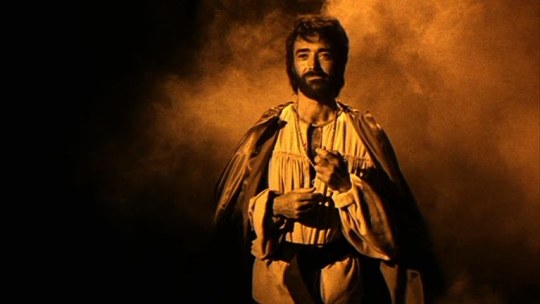









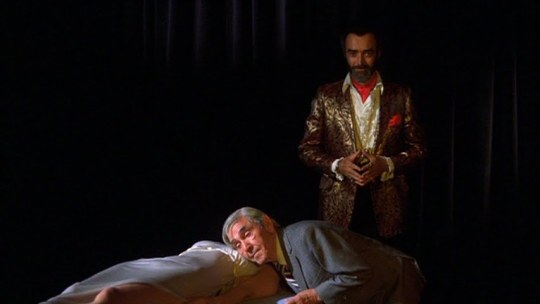




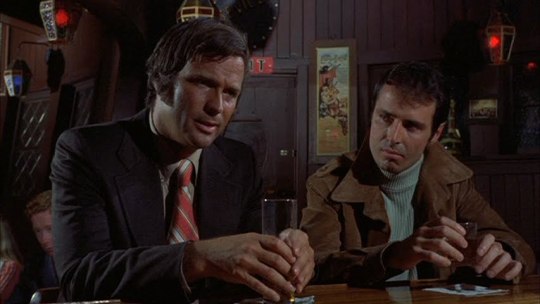

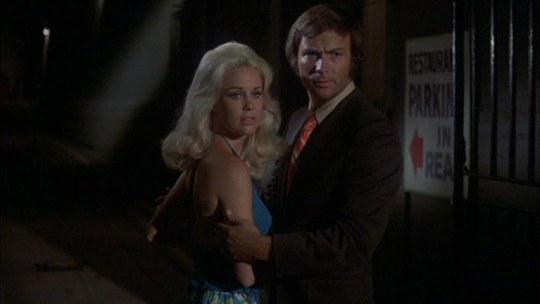

Doctor Death: Seeker of Souls (1973), Dir. Eddie Saeta.
#cult horror#grindhouse#horror movies#cult film#creepy#70s movies#1970s#70s horror#doctor death#john considine#american horror#black comedy#horror#blood#leon askin#gore#american cinema#1973#doctor death seeker of souls#horror comedy#eddie saeta#1970s movies#moe howard#psychotronic film#supernatural horror#independent film#supernatural#obscure horror#film stills#cult cinema
7 notes
·
View notes
Text
On April 11, 1999, Soultaker was riffed on Mystery Science Theater 3000.

#soultaker#michael rissi#robert z'dar#supernatural horror#horror film#horror movies#horror#fantasy film#mystery science theater 3000#mst3k#mst3k fan art#mst3000#supernatural fantasy#american international pictures#indie film#independent film#movie art#art#drawing#movie history
2 notes
·
View notes
Text
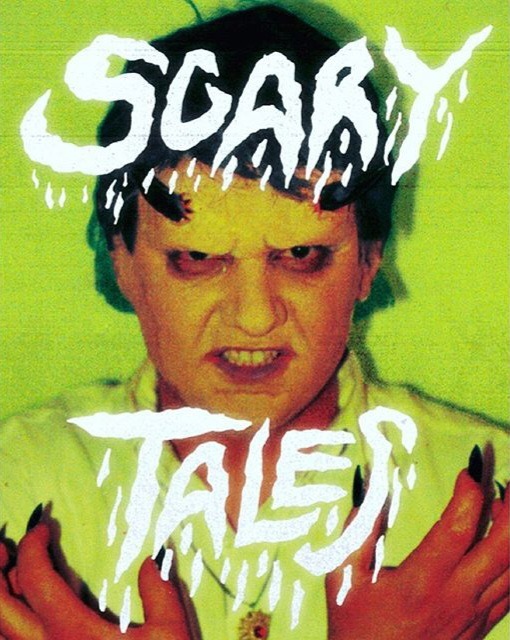





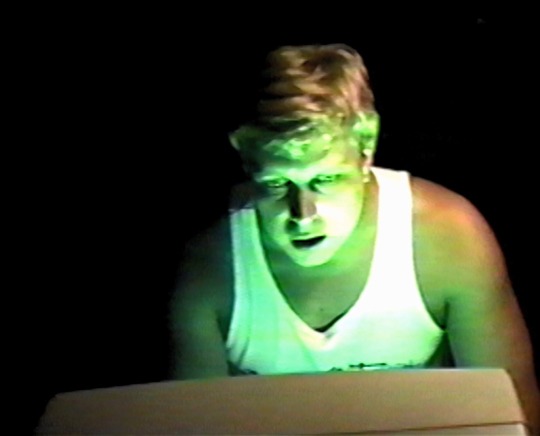
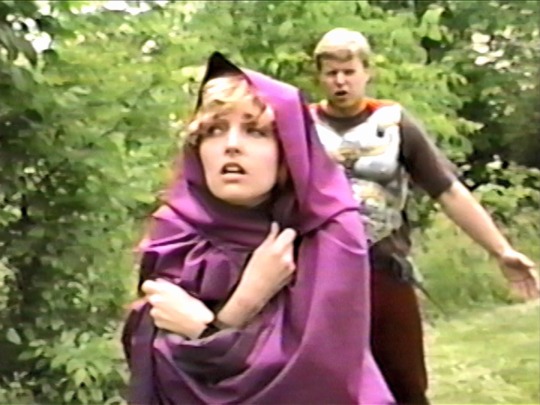


Scary Tales (1993)
"Here I am at this red light, I'm on my way over here, and this asshole decides to carjack this lady in front of me - not knowing that I'm a cop."
"No shit."
"Yeah. Now, me being Dick fuckin' Tracy, I gotta apprehend this fucking idiot."
"Ah, one of Baltimore's finest."
"I tell you what, I deal with more assholes than a fucking proctologist."
#scary tales#horror imagery#gore tw#gore#american cinema#1993#horror film#independent film#doug ulrich#al darago#brad storck#ilene zelechowski#mark shapiro#cindy darago#kevin rogers#robert zelechowski#ann ulrich#karey riley#christine schatz#mark rybczynski#real deep dive into DIY gonzo horror filmmaking. shot on video with a largely amateur cast (mostly doubling‚ sometimes within the#same chapter of this portmanteau). this is real indie hours stuff and honestly all the more charming for it; director Ulrich may be#hamstrung by bad equipment‚ a zero budget and an occasionally variable cast‚ but this is so obviously a labour of love‚ and some genuine#talent does shine through. particularly the practical fx‚ which are sometimes startlingly brilliant. the script is sometimes sharp and#sometimes lousy‚ and the plotting is fairly predictable horror staples‚ but intentionally or not this film seems to be equally as concerned#with a kind of 90s lower middle class ennui for WASPs as it is with serial killers and devil curses: it's all dreary suburbs and dive bars#unemployment and cuckolding. a genuinely fascinating piece of regional homemade schlock horror‚ tho the lo fi aesthetic and#awkward performances might be a turn off for a more discerning viewer (which i absolutely am not)
1 note
·
View note
Text
What is Mmanwu? Mmanwu is an upcoming animated horror short film about a Nigerian-American teenager returning to Nigeria after the death of her grandfather. The animation is gorgeous and amazing!
This animated film is directed by Uzo Ngwu, the Nigerian-American multidisciplinary artist with a deep passion for representation in art and media. She also founded her independent animation studio and production company, Zoma Studios!
To support her project, you must support Zoma Studios and Mmanwu on Kickstarter, to giving them as love her beautiful animations and reach to full 100% goal, and reach stretch goals like Igbo dub, live musicians and Nollywood-inspired end credit scene!
15 notes
·
View notes